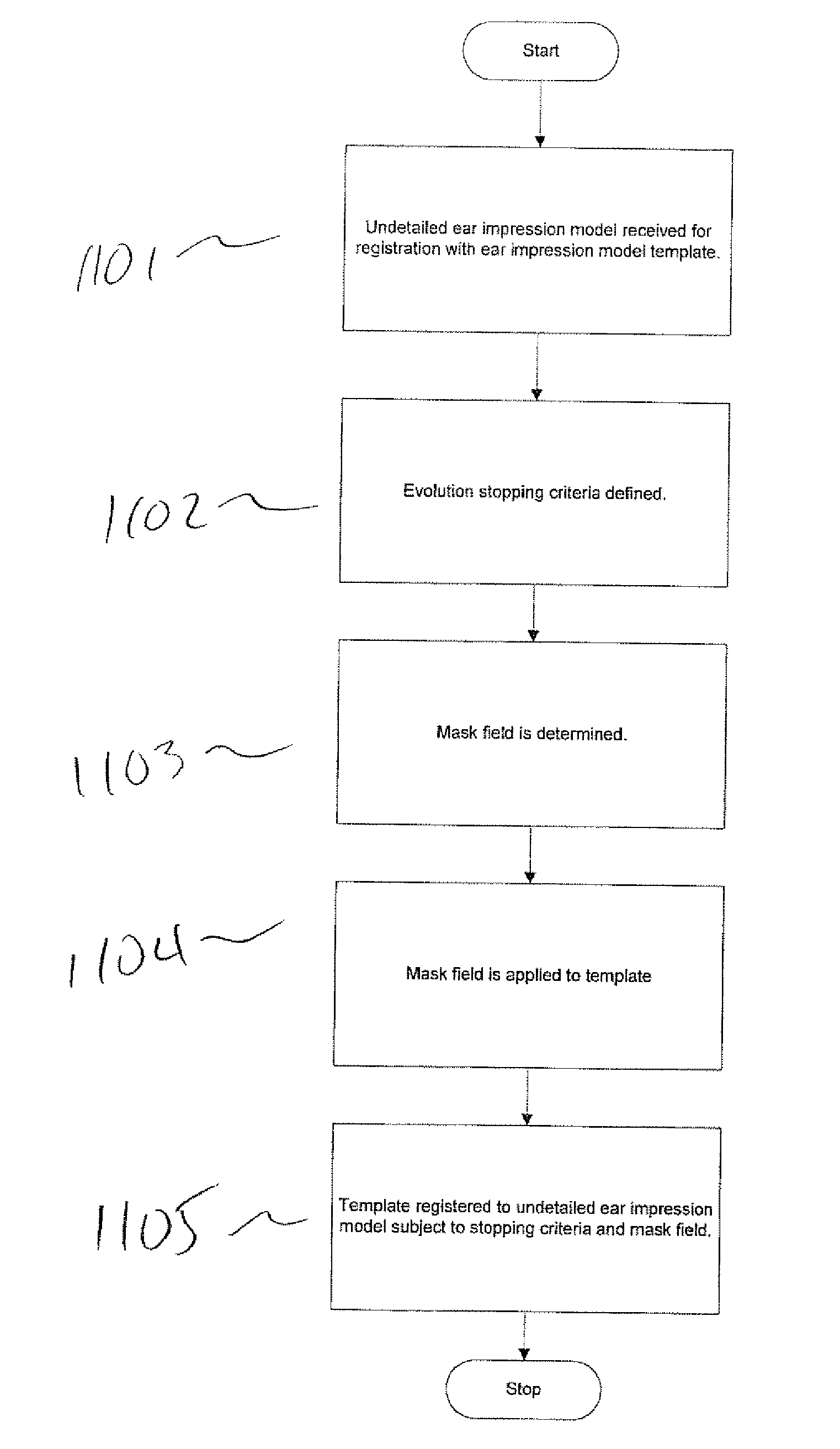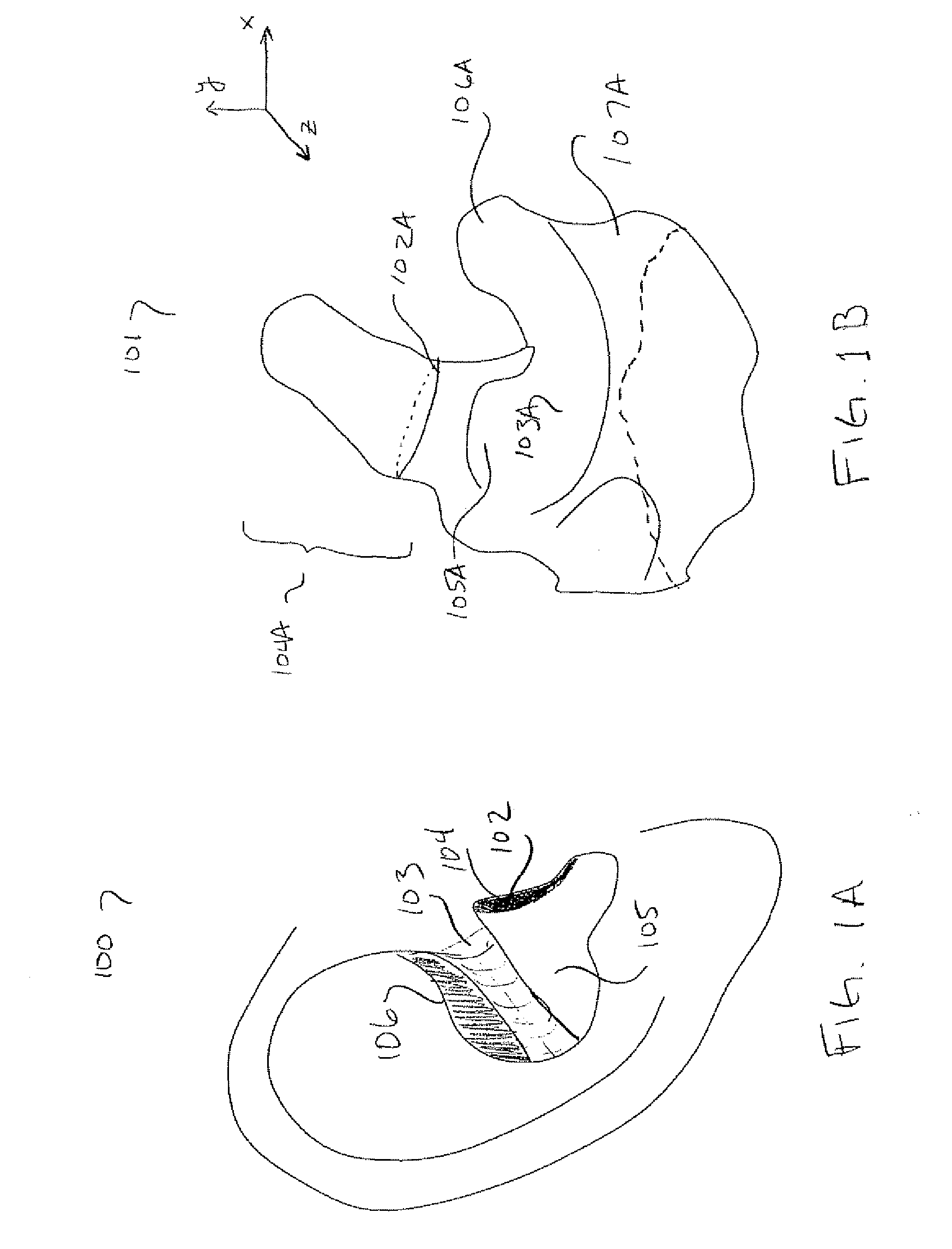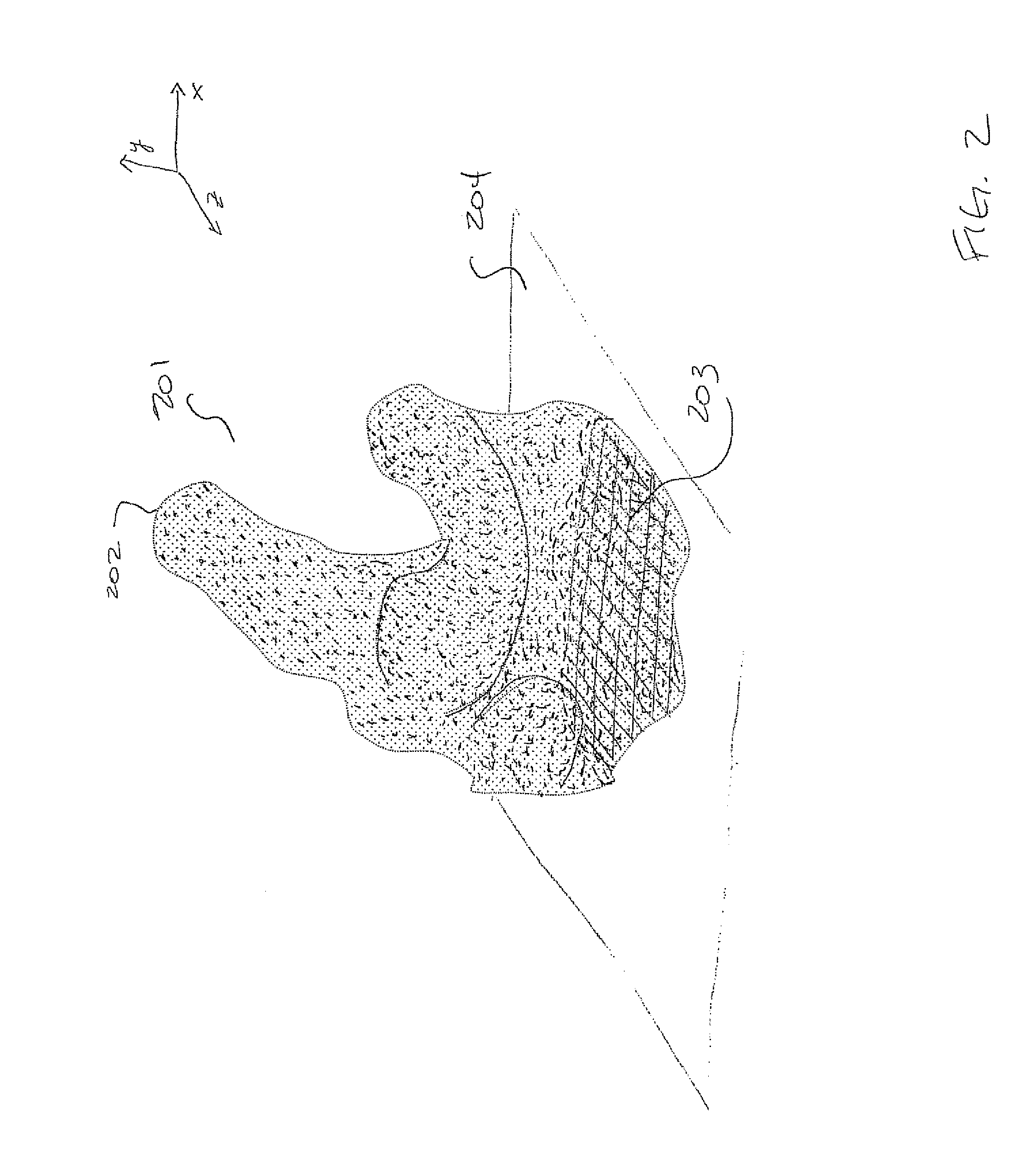Method and Apparatus for the Rigid and Non-Rigid Registration of 3D Shapes
a technology of 3d shapes and registration methods, applied in the field of three-dimensional objects registration, can solve problems such as disadvantages in some aspects
- Summary
- Abstract
- Description
- Claims
- Application Information
AI Technical Summary
Benefits of technology
Problems solved by technology
Method used
Image
Examples
Embodiment Construction
[0024] Registration of two different surfaces is a fundamental task with numerous potential applications in various fields. As is well known and as used herein, registration is generally defined as the alignment of two three-dimensional surfaces through the use of various three-dimensional transformation techniques, such as, for example, three dimensional surface rotation and translation. Registration typically involves aligning two shapes in such a way as to allow the comparison of the shapes to, for example, identify similarities and differences between those shapes. While such registration is a fundamental technique and can be very useful, the registration of two complex three-dimensional (3D) shapes, such as shapes formed by ear impressions used in the manufacture of hearing aids, is not trivial. In fact, in such cases, registration may be very computationally and practically difficult. Prior registration attempts in various fields have typically represented shapes to be registe...
PUM
 Login to View More
Login to View More Abstract
Description
Claims
Application Information
 Login to View More
Login to View More - R&D
- Intellectual Property
- Life Sciences
- Materials
- Tech Scout
- Unparalleled Data Quality
- Higher Quality Content
- 60% Fewer Hallucinations
Browse by: Latest US Patents, China's latest patents, Technical Efficacy Thesaurus, Application Domain, Technology Topic, Popular Technical Reports.
© 2025 PatSnap. All rights reserved.Legal|Privacy policy|Modern Slavery Act Transparency Statement|Sitemap|About US| Contact US: help@patsnap.com



